Comparison of approaches of An Epoch of Typographic Genius and Art Noveau
Graphic design has been developing throughout centuries. There were several significant and even revolutionary changes in alphabetic letters (Meggs and Purvis 108). For instance, researchers point out that the 17th and 18th centuries were the epoch of Typographic Genius (Meggs and Purvis 108). One more significant epoch was the reign of Art Noveau which was characterized by the evolution of Asian art. Both of these forms of art seem to originate from one point and then influenced by different factors were shaped into their eminent outcome; society, religion, and governance are some of the factors that influence these two forms of art (Meggs and Purvis 140).
These two kinds of art vary as Art Noveau could be characterized by a more general, international ‘approach’ since the Asian artist used western concepts and the influence of the Asian technique on European and American art. On the contrary, the so-called Epoch of Typographic Genius relied on European forms: artists involved in the design of the alphabetic letters majorly used western concepts. It is quite clear that different political or religious issues had an impact on art as some could design the alphabetic art and some could not; limitations were placed on how prints could be made. In Asia, various dynasties had their own rules regarding the kind of art that was to be produced.
In the epoch of Art Nouveau major changes did take place. For example, China influenced the Western countries, as well as Asia, was influenced by Europe and America.
Art Nouveau which was a new and fresh art movement took place after a somewhat suffocating Victorian era. The period before early Modern Art came into use in everyday life: lots of decorative designs appeared. Many talented artists from Japan did contribute to the development of Art Nouveau by integrating new concepts into their designs. Interestingly, such images also portrayed daily life activities and did penetrate the daily routine. Artistic techniques that influenced Art Nouveau include the Rococo style, cultic design, the Arts and Craft movement, the European painting, and the Japanese Art forms for decorating (Meggs and Purvis 115).
Art Nouveau applied many symbols in its whole artwork. Art Nouveau had elements of life, birth, growth. Concepts of death and decay were also represented. People in England put the focus on illustration and designing graphics. The artwork was spread worldwide through the use of periodicals.
During the Epoch of Typographic Genius, the artist attempted to develop alphabetic letters that were attractive to the reader. In the same way, people utilized the Harpers magazine art work, which was placed on the cover as an effective means of attracting people. The form of artwork that was placed in the magazines included mixed imagery and text; people were portrayed as reading the magazine. Similarly, John Baskerville used a gravestone slate to show his potential customers his carving skill and range of lettering styles.
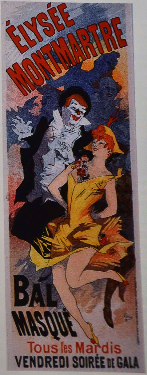
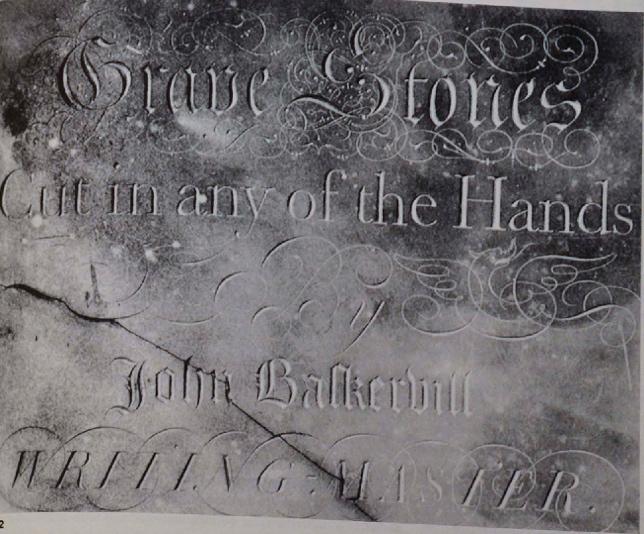
Peter Behrens’ design work and approach
At the dawn of the twentieth century, Peter Behrens applied a new aesthetic technique. He also played a significant role in the creation of what is referred to as Art Nouveau and later came to be known as Art Deco. Peter Behrens was also involved in the Jugendstil movements in Australia and Germany. Peter Behrens was also active in industrial, graphic, and architectural design.
The fact that Germany was ruled by different kinds of regimes with differing policies at different times allowed it to develop a more flexible approach towards how German artists viewed different regions. German artists considered different regions to be unique diverse cultures which had a lot of similarities. Therefore, Peter Behrens developed his skills by the same trend which can be found in many works of his peers.
By the year 1890, Peter Behrens had already moved into Munich. This city was rich in both culture and finance. While still in the city of Munich Peter Behrens was influential in introducing a movement known as Jugendstil (Anderson 33). It was in this movement that he began climbing the ladder of his artistic and design profession.
Peter Behrens had covered a curriculum similar to any other art student. This included paintings and drawings, stained glass, mixing dyes, iron art, and stone masonry. However, in the late 1800s art became rigid and stultifying. At this time there emerged new techniques referred to as fin de siècle. This technique did emerge differently across different cities found in Europe but was mostly expressed in arts. Regardless of this term being French, its general idea is European. This period was marked with self-awakening and cultural awareness. This time had also elements of decadence which was most evident in Belgium and France.
Nonetheless, the German and the British did not display decadence, instead, their aesthetic believes were somewhat pure. The Spanish, Belgian and the French integrated decadence and placed their faith on shared destiny, which was a hindrance towards the termination of traditionalism. In all this, the British, the Scotch, and the German artist upheld a very different kind of approach.
Likely, the fatalism that existed within the Catholic concepts and the pragmatism of the Protestant countries created this kind of variance in which it is still present (Lupton 167).
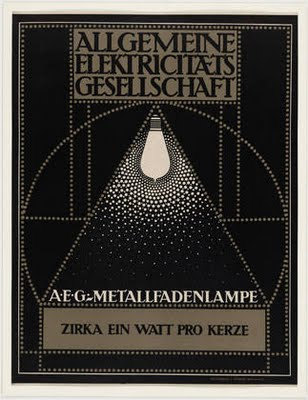
Peter Behrens viewed art, just like other artists, as a form of unique language and a combination of symbols unlimited universally. Nevertheless, that concept had been diminished or even lost with the emergence of the industrial age and wars that seemed not to cease.
Alternative measures were taken by the secession group which rejected conservationism and influence associated with the salons. Instead, artists started writing and drawing the images using the language of the movement.
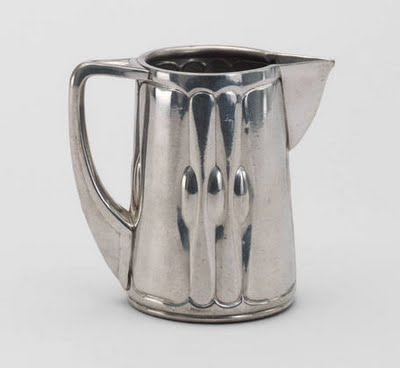
Peter Behrens did carvings and also illustrations for woodblocks as well as created linoleum carvings. Peter Behrens specialized in this area. The movement’s policy was to maintain beautiful air in a person’s life; filled with the inspiration and light that art brings with it.
The movement became even more visible as it was manifested in architecture and design, which could now be included in the aesthetics. Designers were able to produce much more art with much fewer restrictions, this could not be compared to any of previous experiences for about a decade before.
Peter Behrens himself was one of the most prominent designers of this remarkable period. He also did architectural work, beginning with his own home extending to outside commissions.
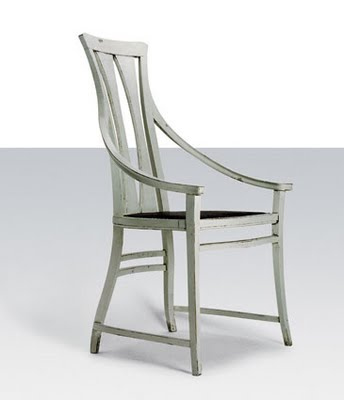
Influence of modern art on the development of design thinking
Modernism in art defines chain movements that are sometimes radical. These changes can appear in music, architecture, literature, applied arts, or event photography. These changes emerged about three decades before the First World War. The modernist movement in the art can be traced back to the eighteenth century. More so, it can be still found deeply rooted in the changes that were taking place in the Western world in the late nineteenth century and early twentieth century.
During the First World War, there was unease and tension regarding social order (Aynsley 180). This was evident in the revolution that took place in Russia at the beginning of the twentieth century. The agitation parties that had radical elements in them inspired many artists. For instance, in 1913 a famous composer named Igor Stravinsky created a ballet that did depict human sacrifice.
Other artists like Henri Matisse and also Pablo Picasso were causing waves with their defiance. They challenged perspectives that were traditional techniques for paintings. These kinds of occurrences in art began to offer a new definition referred to as Modernism. Modernism embraced rejecting, disruption, and exploring beyond basic realism in the art (Childs 29). Visual arts, literature, and even music faced resistance which was characterized by dramatic alteration of music tonality. All these characteristics defined modernist. The ninetieth-century artists who inclined towards what they believed were progressive.
Those progressive artists were not considered to be radical they were members of the society and valued by it. They developed art forms that were valued by society, though at times these artists did critique some less desirable truths found in the society at the time. On the other hand, the modernist, while still having the elements of being progressive, viewed traditional social arrangements and forms as being obstacles towards progress. Therefore, the artists of the period of Modernism emerged as revolutionary entities that overthrew rather than brought enlightenment.
The artists that contributed greatly to Modernism have similar characteristics of being rebellious towards nineteenth-century historic and education traditions. They believed that earlier artwork techniques were becoming outdated.
Industrialization brought emerging trends regarding the society, economy, and also political aspects. These trends had their effects on various forms of art, various groups like Cubism, Symbolism, and atonality began to be noticed.
The First World War involved advanced technology that led to the slaughter of masses. Of course, such ‘innovations’ fueled a lack of trust that there was any kind of reasoning. Within this kind of environment, art portrayed a life experience in which community, tradition, collective identity, and belief were wearing out fast (Hunter et al. 178).
In the twentieth century, a minor group of intellectuals known as avant-garde was able to attain popular support. The avant-garde became a persuasive, entrenching approach. Interestingly, it was also popular with large masses. Modernist opinion contributed to how culture and public entertainment was influenced, promoting moral relativism and individualism as a factor that did give guidance towards what was considered ethical. At the same time, it greatly influenced the transformation of the role of the spirituality of human life. It opened up a new horizon for people of the twenty-first century.
Works Cited
Anderson, Stanford. Peter Behrens and a New Architecture for the Twentieth Century. Massachusetts, MA: The MIT Press, 2002.
Aynsley, Jeremy. Graphic Design in Germany: 1890-1945. Berkeley, CA: University of California Press, 2000.
Childs, Peter. Modernism: The New Critical Idiom. New York, NY: Routledge, 2008.
Hunter, Sam, John Jacobus, and Daniel Wheeler. Modern Art: Painting, Sculpture, Architecture, Photography. New York, NY: Prentice Hall, 2004.
Lupton, Ellen. Thinking with Type: A Critical Guide for Designers, Writers, Editors, & Students. New York, NY: Princeton Architectural Press, 2010.
Meggs, Philip B., and Alston W. Purvis. An Epoch of Typographic Genius. Hoboken, NJ: Wiley & Sons, 2006.